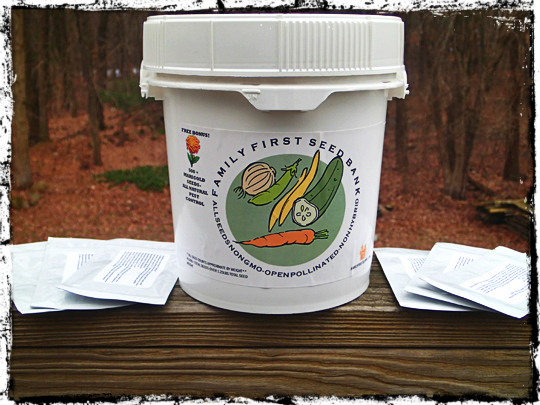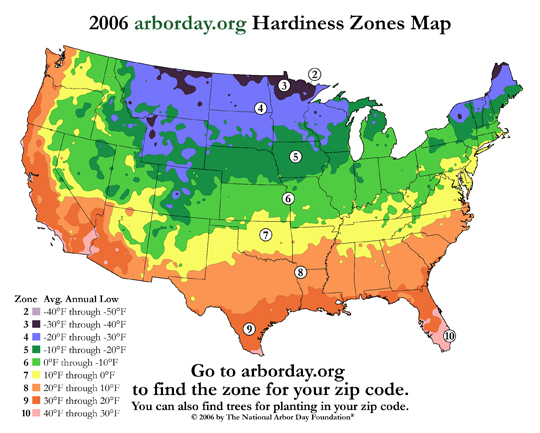
Prepping is not just about having enough food on hand to survive a crisis it is about having the skills, knowledge and resources to develop your own food supply once your emergency stockpile has been depleted because of an extended crisis. This means you have to raise your own food, more specifically fruits and vegetables.
A seed bank is recommended regardless of whether you currently have the outdoor space or not for a garden because vegetables and certain fruits can be raised indoors, in a garage, basement or any room as long as you have adequate sunlight or artificial lighting.
Additionally you may have to evacuate to a safe haven and you must always consider the possibility of never returning. You may have to rebuild your life essentially in another location and this means you would need a renewable and sustainable food source.
Types of Seeds for Your Seed Bank
Hybrid
A hybrid seed is seed produced by cross-pollinated plants. The best plants are selected to improve the characteristics of the resulting plants, to increase yields, uniformity of the fruit, improve the color, and for disease and drought resistance and so on. Many believe that taste does suffer when cross-pollinating however.
While, the hybrid seeds you plant will produce the same plant, the seeds from the hybrid plant will not have any consistency nor have the desired characteristics of the plants from which the seeds were developed. In other words, you cannot harvest the seeds from a plant grown from a hybrid seed and expect to get an identical plant or even a plant at all in some cases. The seeds may not germinate and if they do, the plant may not blossom, nor bear fruit because they generally will not pollinate.
This means for you the Prepper you would have to purchase or have enough seeds stockpiled to plant every season. This means that hybrid seeds and the resulting plants would not be a renewable nor sustainable food source. If you only had enough seeds for one season and did not have a way of obtaining more seeds, you would not have a food source.
You would have to have enough hybrid seeds stockpiled to last indefinably. There is another option however and that is heirloom seeds.
Heirloom Seeds
An heirloom plant or often called an heirloom variety and even called heritage fruit is considered an old cultivar. The definition and use of the word heirloom to describe some plants is fiercely debated, but that is a debate for another day.
It is quite common for a plants’ heritage to be well over 100 years old. The heritage is maintained by open-pollination of the plant to produce a seed that carries the plant’s heritage forward. The good and bad traits of the plant are carried forward in the seed.
Note: Harvest your seeds from the plants that produce the most fruit and appear to be the strongest/healthiest. Gather seeds from more than just one tomato plant, for example, to ensure you are not always carrying the worst traits of the plants forward.
What you need to be concerned about is the fact that an heirloom plant will produce seeds that once planted will replicate the plant exactly and will produce a plant that bears fruit. The seeds inside the fruit can then be harvested for the next growing season. You can do this year after year. However, the seeds must be harvested and stored in a specific way to ensure the seeds will germinate.
You can stockpile hybrid seeds as well as heirloom seeds in your seed bank. Use the hybrid seeds when growing conditions are not ideal because the seeds are developed using the best traits of the plant so they are more likely to produce fruit under less than ideal conditions.
If you know, you will only be in a location for one growing season, do not have the time or resources to properly prepare the garden plot, and do not have time to compost for fertilization then you should consider planting hybrids, because of their hardiness.
Always have heirloom plants in the ground when possible as well, so you can be continually harvesting seeds for your seed bank to establish a long-term food source.
Grow vegetables you and your family will eat and grow surplus produce with bartering in mind as well. You should always have a surplus for preserving and for trading for other goods, services and materials.
Things to Consider
Gardens take time so once the crisis is upon you is when you need to begin thinking about a renewable food source. You have to have seeds in the ground while you still have plenty of food on hand.
Plants do not develop over night and there are never any guarantees of a good harvest. You should have enough supplies stockpiled so food is not an immediate concern while your garden develops. If the crisis happens in the winter months you need enough food to last until spring and then until your plants begin to bear fruit. You should have at a minimum a 12-month supply of food, to allow for all variables.
Some crops can take months before the plants would be ready for harvesting. In some areas of the country, you may have a shortened growing season so once a plant is ready for harvest you cannot expect to get another crop in and matured before the first frost in the fall. A growing season is typically determined by the number of days between the last frost in the spring and the first frost in the fall.
You will never achieve a 100 percent rate in other words a percentage of what you raise will never reach your table. Some of your produce will be eaten by pests or animals and some may even rot prematurely not to mention lack of rain, hailstorms or even excessive rainfall will influence crop yields.
What Type of Vegetables to Plant
First, you have to determine what temperature zone you are in so you can choose the best plants for your area.

The growing season has to be long enough for plants to mature and produce before cold weather sets in, so you have to know what your zone is and then choose plants that will grow in your zone. Certain plants that require a longer growing season than your area provides can be started indoors and then transplanted after the threat of frost has passed in the spring.
Here is an informational link so you can determine when to plant what vegetables
http://www.extension.iastate.edu/publications/pm534.pdf
You can grow whatever vegetables can be grown and once again make sure they are vegetables everyone likes and then make sure you have a surplus of all varieties for bartering and preserving.
Consider the growing space you need carefully because some plants may take up more space than you may have expected such as cucumbers and squashes. They will vine out but they can be controlled to conserve space by using trellises or stakes. Beans can be grown on poles, for example, instead of allowing them to sprawl all over the area, to leave room for other plants.